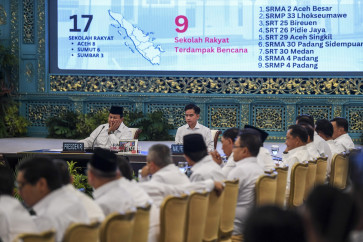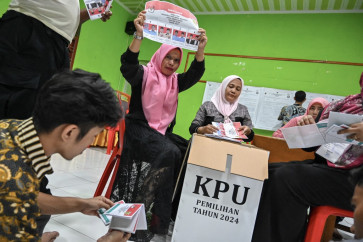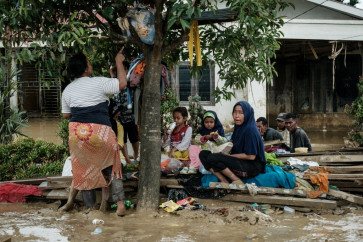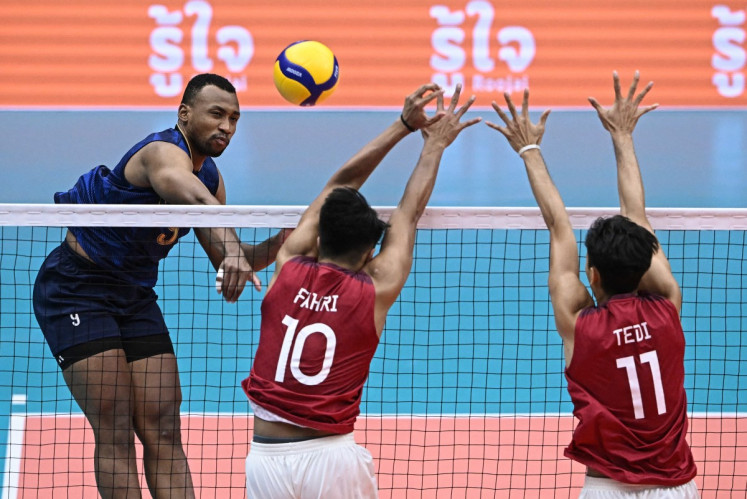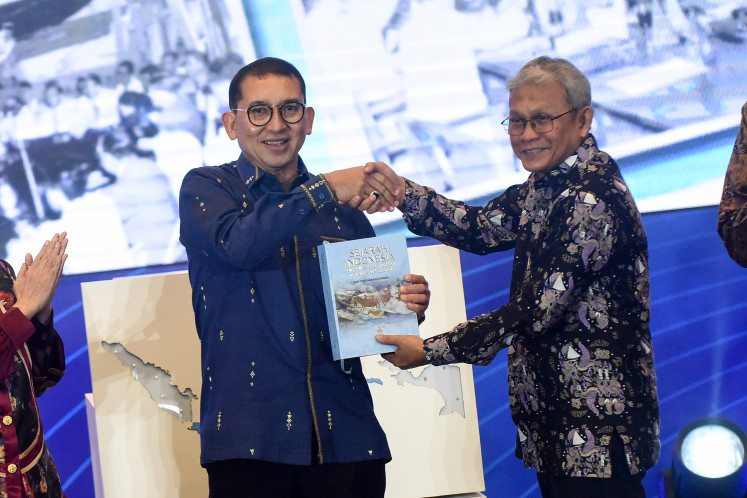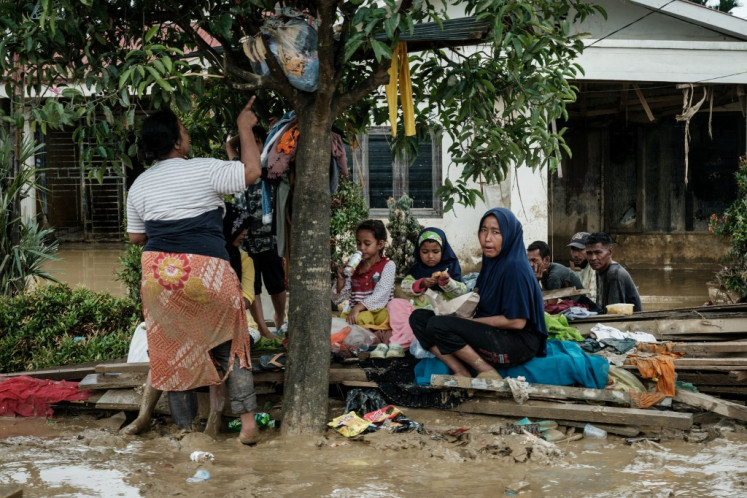Popular Reads
Top Results
Can't find what you're looking for?
View all search resultsPopular Reads
Top Results
Can't find what you're looking for?
View all search results5G can bring $1.8b in revenues for RI telecoms in 2025: Study
Connecting the people: Two workers conduct regular maintenance on a telecommunications tower owned by PT Tower Bersama Infrastructure (TBIG) in Cikampek, West Java
Change text size
Gift Premium Articles
to Anyone
C
onnecting the people: Two workers conduct regular maintenance on a telecommunications tower owned by PT Tower Bersama Infrastructure (TBIG) in Cikampek, West Java. A recent study indicates that Indonesia will likely adopt fifth-generation wireless technology starting in 2022, a little bit late compared to other ASEAN countries such as Singapore and Vietnam. (JP/Nurhayati)
Although Indonesia’s adoption of the fifth generation (5G) wireless technology is to likely lag behind regional peers, it can boost telecommunications operators' revenues by US$1.3 billion to $1.83 billion in 2025, with major contributions from enterprises, a recent study suggests.
Enterprises can contribute 18 to 22 percent to incremental revenue growth while individual consumers can contribute 6 to 9 percent, according to the study conducted by computer networking company Cisco and management consulting company A.T. Kearney.
“I believe Indonesia can reach this number because it has mature telecommunications companies and growing industries,” said Cisco ASEAN’s managing director of service providers, Dharmesh Malhotra, on Monday.
He added that to capture the possible market, the country would need to invest about $4 billion to $6 billion annually from 2020 to 2025, which is the highest amount among ASEAN countries as Thailand and Malaysia only need to invest about $2 billion and $1 billion, respectively.
The study also found that 5G market penetration can reach 25 to 40 percent in some countries in the region, with a total of more than 200,000 subscribers. Indonesia is said to have the highest number, with more than 100,000 subscribers.
He said Indonesia would likely adopt the fifth-generation technology starting in 2022 and would experience a
subscription surge in 2023 onwards. While 5G in other countries such as Singapore and Vietnam would likely take off in 2020 and 2021.
With latency as low as 1 millisecond and speed up to 20 gigabytes per second, the 5G technology can be used for enhancing high-definition video streaming, adding more augmented reality and virtual reality (AR/VR) contents and providing a faster gaming experience.
“For enterprises, 5G technology can help with increasing precision in manufacturing and remote logistics monitoring,” Dharmesh said, adding that in the medical field, remote diagnosis and surgery would be available once it is fully established.
A partner at A.T. Kearney, Hari Venkataramani, said that Indonesia still faces challenges in implementing the technology, such as the slow availability of spectrum and a possible price war between operators.
He said that Indonesia needs to address frequency availability as the 3.4 to 3.6 gigahertz range was being used by satellite providers. Meanwhile, according to the Communications and Information Ministry, the 2.6 GHz frequency was being used by a satellite television provider, Indovision, until 2028. So it left Indonesia with frequencies higher than 10 GHz.
Even though no official decision has been made yet, the government is preparing some policies regarding 5G. Indonesia is also expected to participate in the World Radiocommunication Conference in Egypt next month, after which it should be able to determine the possible spectrum for 5G in line with the international consensus at the conference.
In terms of pricing, Hari said that Indonesian consumers seem excited and willing to pay for 5G services. He predicted that as much as 15 percent of consumers can be the target for premium pricing.
“So there will be no need for a price war among operators. Instead, they need to work together such as through tower sharing,” he said, adding that operators should offer bundling packages to attract more consumers.
Several telecommunications providers in Indonesia were also eager to test for 5G development.
PT Telkom, through its subsidiary state-owned Telkomsel, was the first telecommunications operator to test the technology during the Asian Games in September last year. Indosat Ooredoo then followed in November by demonstrating the ability of 5G to support 3D augmented reality.
Other providers, such as XL Axiata, have recently tested 5G in the use of the networks for online gaming and hologram displays. Meanwhile, Smartfren has also run a 5G test for logistics and manufacturing purposes.


